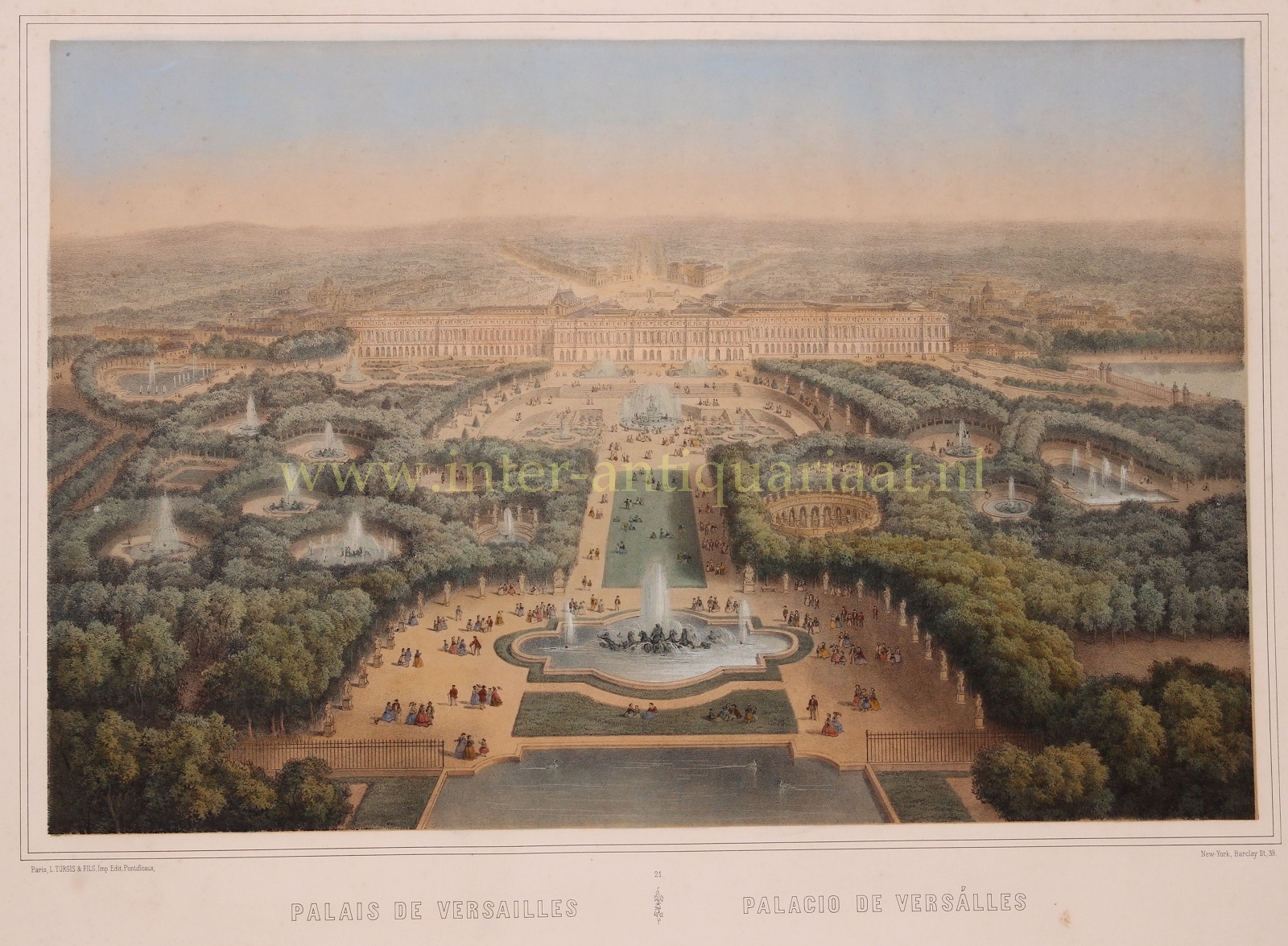Versailles – Turgis & Fils, c. 1850
€650
MID 19TH CENTURY VIEW OF VERSAILLES
“Palais de Versailles – Palacio de Versálles“ Lithograph published by L. Turgis & Fils. in Paris around 1850. With original hand colouring. Size: (view) 31,5 x 48 cm (print: 36 x 50 cm).
The history of Versailles is inextricably linked with the figure of Louis XIV. Although the location had existed for centuries, Louis XIV developed a genuine liking for Versailles early on, and decided to extend it beyond the chateau that had grown out of the hunting lodge of brick and stone first built by his father. The King took on the role of architect himself, and built a masterpiece with which he would forever be associated.
Following the death of Louis XIV in 1715, the court abandoned Versailles for Vincennes and the palace entered a period of neglect. In 1722, the young Louis XV returned to Versailles but often resided at Fontainebleau, Marly and Compiègne.
During the reign of Louis XVI there was a constant succession of festivals and entertainment in Versailles, but it was in Paris that the courtiers spent most of their time, often leaving Versailles rather empty. Failing to see clearly the social and economic situation, Louis XVI, who merely wanted to be loved, and Marie-Antoinette, who loved luxury, were undoubtedly at a loss to explain the events of 5 and 6 October 1789 which forced them to leave Versailles for a final journey to Paris…
The palace came through the period of the French Revolution relatively unscathed, but in the following years a large part of the art collection was moved to the new museums of Paris and most of the furniture was sold off.
Well aware of the palace’s image, Napoleon chose not to settle here, but opted instead for Trianon, which was more modest. It was not until the accession to the throne of Louis-Philippe in 1830 that Versailles was really brought back to life by creating a museum in 1837, celebrating glorious events in the history of France from the Middle Ages to the start of the July Monarchy. For the first time therewith opening the palace to all people, which was exceptional not only to France, but to the entire world of royalty.
Napoleon III (during who’s reign this rare lithograph was made) went on to use the palace as a venue for celebrations and to represent his power. Here he received Queen Victoria for a sumptuous stay in 1855.
The palace still today serves political functions. At the same time Versailles is one of France’s foremost tourist attractions.
Price: Euro 650,-


